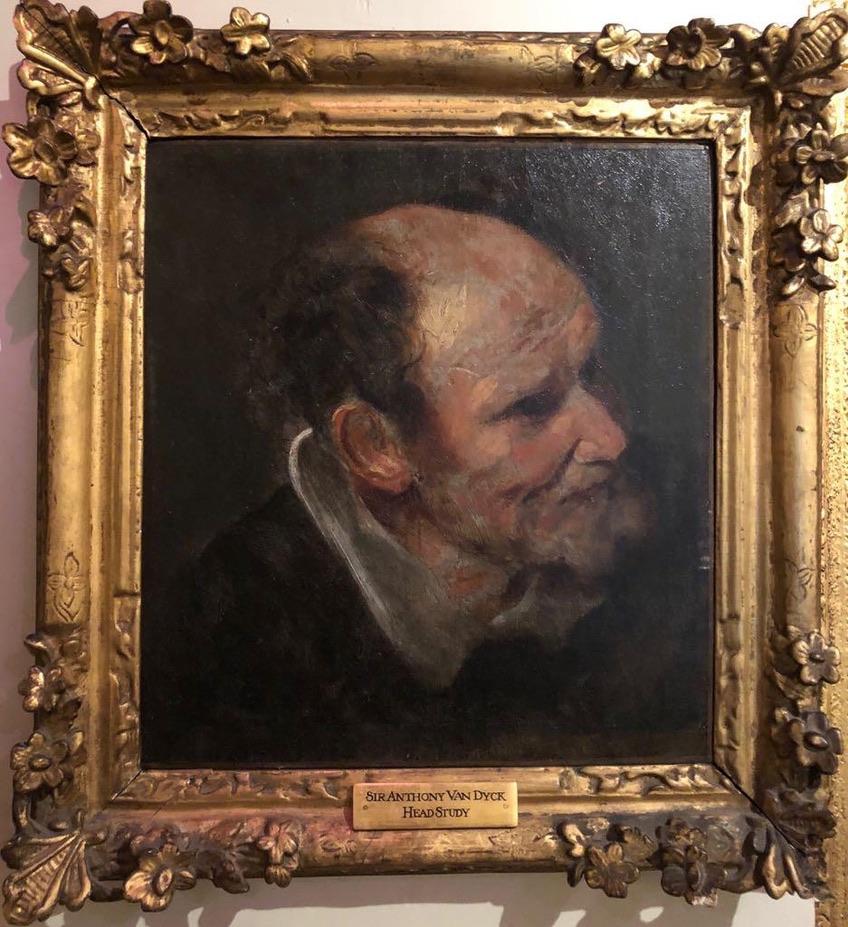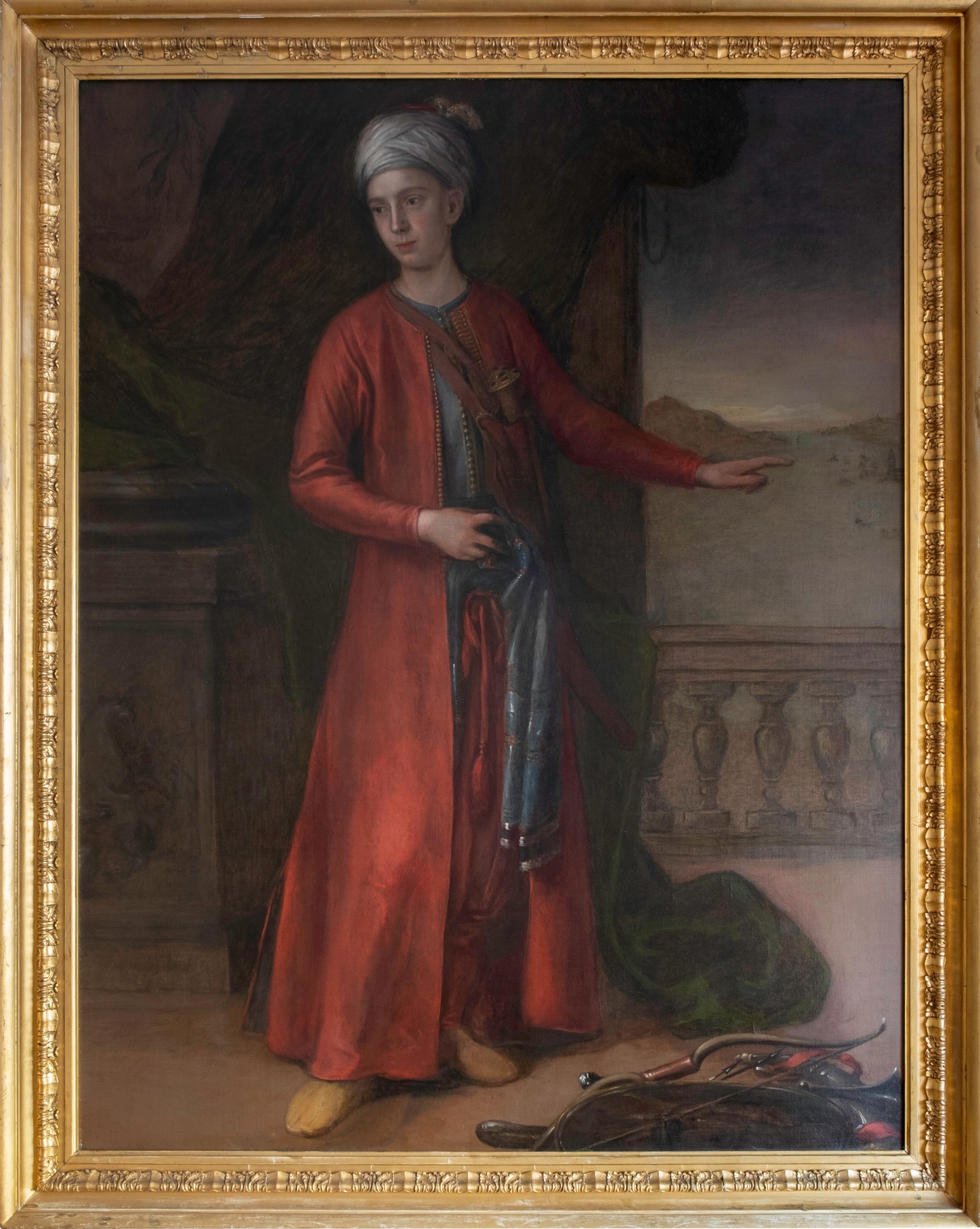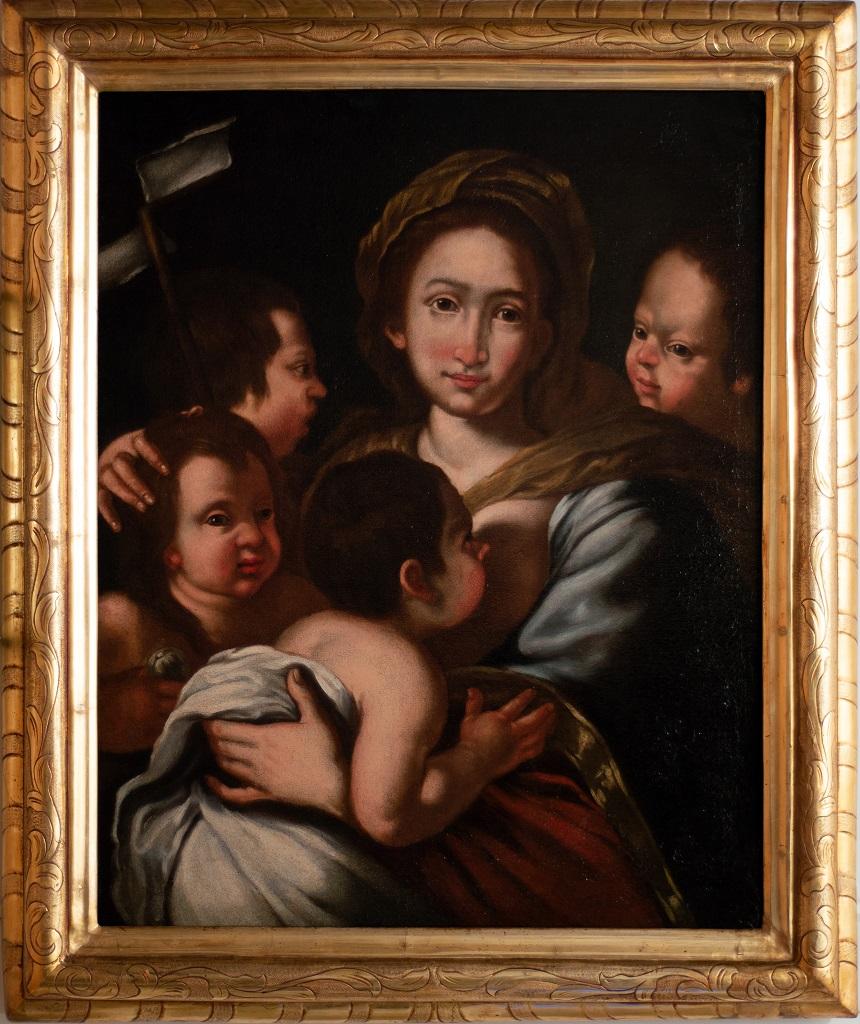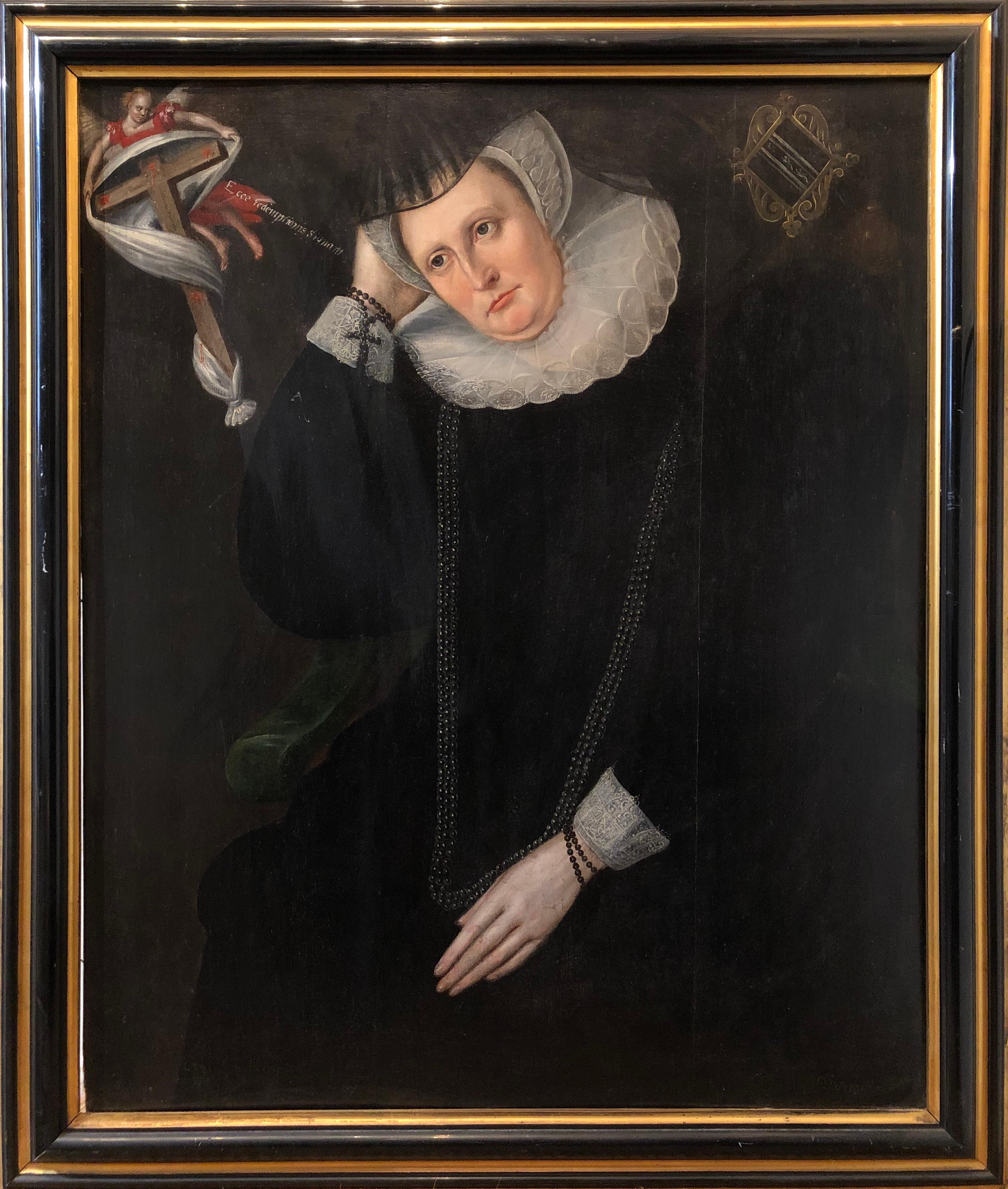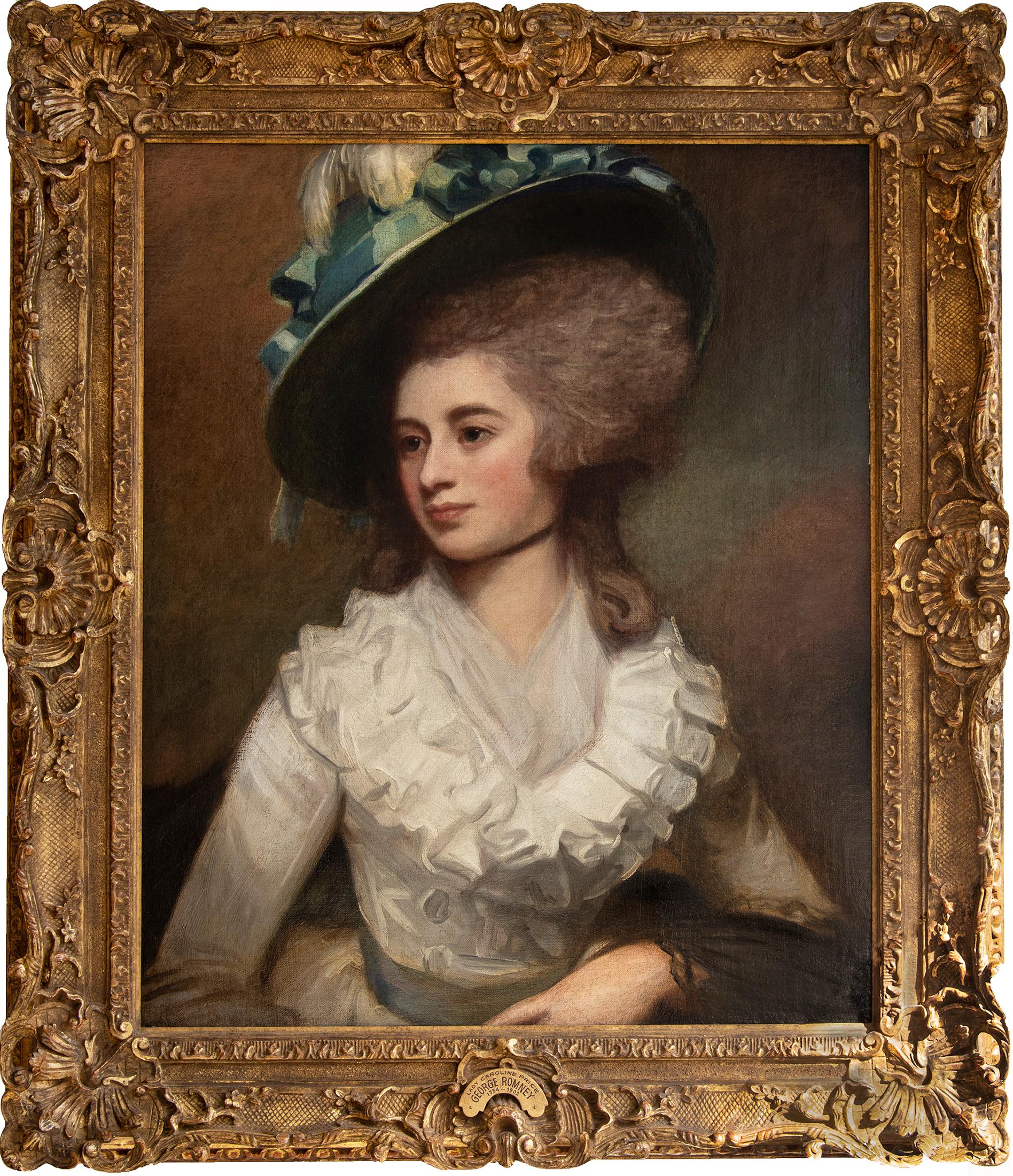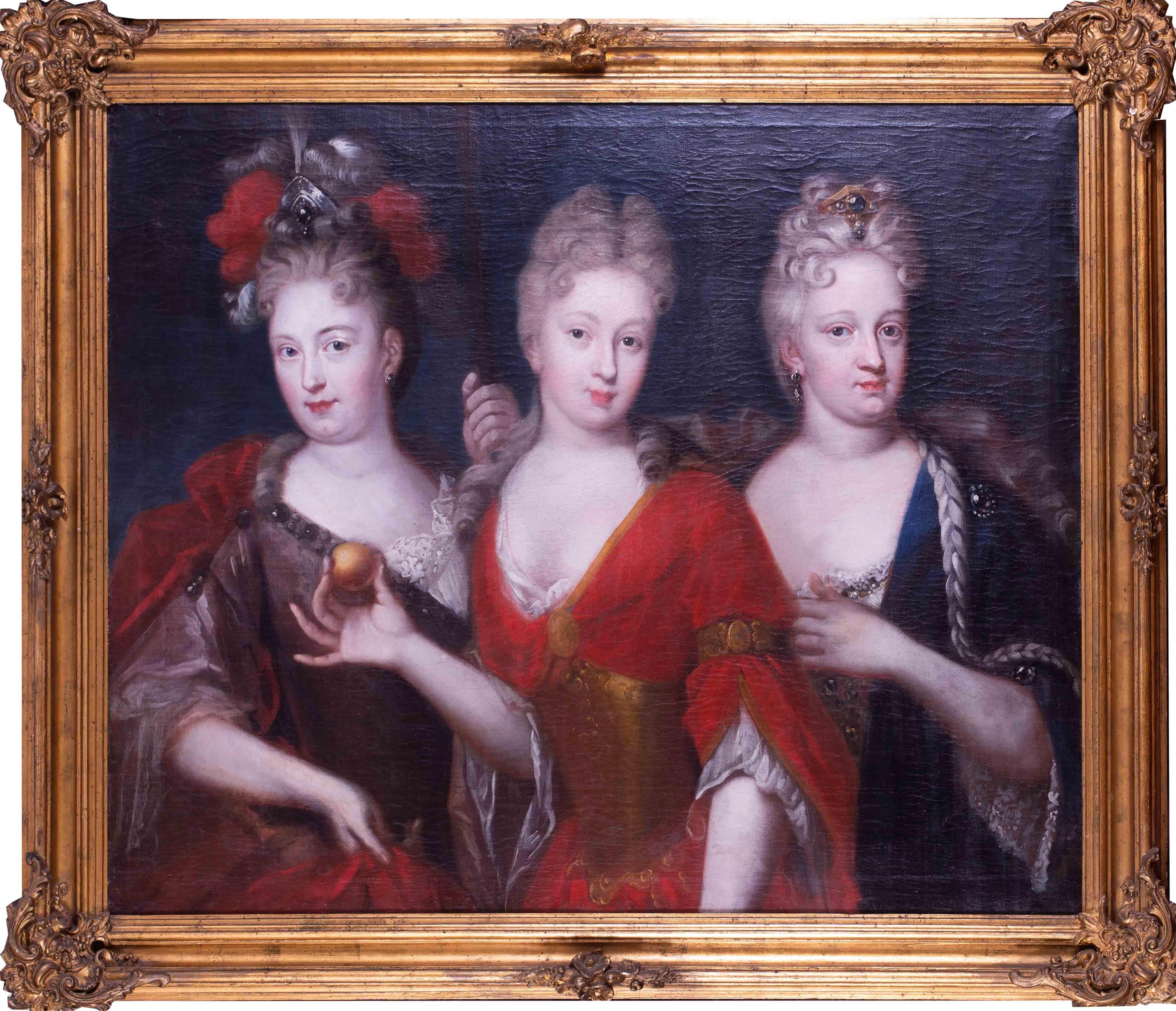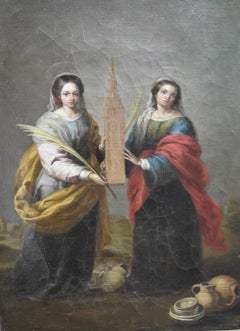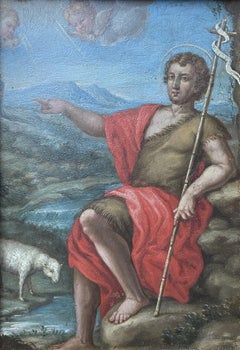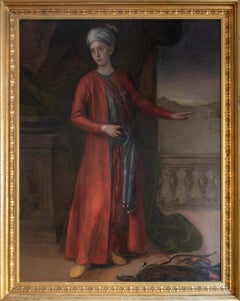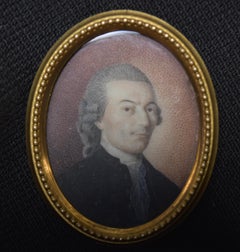
France 18th Century, Miniature Portrait of a Gentleman
View Similar Items
Want more images or videos?
Request additional images or videos from the seller
1 of 5
UnknownFrance 18th Century, Miniature Portrait of a Gentlemancirca 1790
circa 1790
About the Item
- Creation Year:circa 1790
- Dimensions:Height: 1.38 in (3.5 cm)Width: 0.99 in (2.5 cm)
- Medium:
- Movement & Style:
- Period:1790-1799
- Condition:
- Gallery Location:Paris, FR
- Reference Number:1stDibs: LU111224563731
About the Seller
5.0
Platinum Seller
These expertly vetted sellers are 1stDibs' most experienced sellers and are rated highest by our customers.
Established in 2018
1stDibs seller since 2019
210 sales on 1stDibs
More From This SellerView All
- Spanish School 19th century, Santa Justa and Santa Rufina, oil on canvasLocated in Paris, FRSpanish School of the 19th Century Santa Justa and Santa Rufina Oil on canvas 40 x 27 cm In quite good condition, the paint surface presents numerous crack...Category
1840s Old Masters Figurative Paintings
MaterialsOil
$1,430 Sale Price25% Off - 17th Century French School, Saint John the Baptist, oil on copperLocated in Paris, FR17th Century French School Saint John the Baptist in a landscape oil on copper 17 x 11.5 cm In good condition except very small loss of painting in the lower left part In a modern f...Category
1680s Old Masters Portrait Paintings
MaterialsOil
- French Romantic School, 19th Century, Manly head of bearded man, oil on canvasLocated in Paris, FRFrench Romantic School 19th Century Manly head of bearded man oil on canvas 46 x 37.8 cm In fairly good condition, some inpaintings visible under UV light, mainly in the backgrounds ...Category
1850s Romantic Portrait Paintings
MaterialsCanvas, Oil
- Lucien-Victor Guirand de Scévola (1871-1950) Portrait of Lady, oil sketch signedBy Lucien-Victor Guirand de ScévolaLocated in Paris, FRLucien-Victor Guirand de Scévola ( 1871 – 1950) Portrait of a lady, a sketch signed lower right Oil on canvas transfered on cardboard 25 x 18 cm oval Framed : 31 x 24.5 cm This port...Category
1920s Art Deco Portrait Paintings
MaterialsOil
- French Romantic School, 19th Century, Portrait of a man, oil on paperLocated in Paris, FRFrench Romantic School, 19th Century Portrait of a man, a selfportrait ? oil on paper 17.5 x 12 cm oval Framed under glass : 43 x 34.5 cm This rather mysterious portrait is perhaps a self-portrait of the artist who painted it. This is suggested by the three-quarter pose and the gaze fixed on the viewer. What this man seems to be staring at is himself. Similarly, the model's appearance is reminiscent of the image of the romantic, bohemian, tortured artist. It's also very interesting that he used a range of dark colours to reinforce this idea of melancholy. It has been suggested that this small oil on paper is close to the art of François Bonvin (1817-1887) and Théodule Ribot...Category
1860s Romantic Portrait Paintings
MaterialsOil
- French Romantic School, Portrait of a young priest, dated 1860 oil on canvasLocated in Paris, FRFrench Romantic School, Portrait of a young priest, 1860 Signed (illegible) and dated 1860 oil on canvas 21.5 x 16 cm In a modern frame : 35 x 29 cmCategory
1860s Portrait Paintings
MaterialsOil
You May Also Like
- Antique Watercolor Painting Muscular Male Nude Classical Roman PoseLocated in Cirencester, GloucestershireMuscular Made Nude, "Olympus"? sepia watercolour drawing on paper, framed framed: 23 x 15 inches painting: 20 x 13 inches provenance: private collection condition: very good and sou...Category
19th Century Old Masters Figurative Paintings
MaterialsWatercolor
- Stunning 17th Century Oil Painting - Study of a Head of a ManBy Anthony van DyckLocated in London, GBStudio of Sir Anthony Van Dyck (1599-1641, Flemish) Study of a Head of Man Circa 1627-32, Van Dyck’s second Antwerp period Oil on paper, laid down on canvas Dimensions 15 x 14 inches...Category
17th Century Old Masters Portrait Paintings
MaterialsOil
- 18th C. Portrait of the 4th Earl of Sandwich a View of Constantinople BeyondLocated in London, GBJohn Montagu, 4th Earl of Sandwich (13 November 1718 – 30 April 1792) Attributed to George Knapton (1698-1778) Dressed in the Turkish manner, stand...Category
18th Century Old Masters Figurative Paintings
MaterialsOil
- Christian Charity - Tempera by the circle of Bernardo Strozzi - 1630sBy Bernardo StrozziLocated in Roma, ITChristian Charity is an original Old Master Painting realized in the first half of the XVII Century, most probably in the 1630s, by one of the pupils of the Italian artist Bernardo Strozzi...Category
1630s Old Masters Figurative Paintings
MaterialsTempera, Canvas
- 18th Century Oil Painting Portrait of Provost John Pitcairn of DundeeBy Sir Henry RaeburnLocated in London, GBThe pendant to the present portrait showing John Pitcairn's wife Jean, née Robertson, is in the Huntington Art Gallery, San Marino. Both works are datable to the 1790s. Pitcairn, who served as Provost of Dundee from 1782-84, a position his father-in-law also held from 1731-32, later sat to Raeburn for another portrait, dated to circa 1820, which is now in the Royal Scottish Academy, Edinburgh Sale of Christie's London: Wednesday, July 9, 2014 [Lot 00212] Old Master & British Paintings Day Sale Sold For 22,500 GBP Premium Provenance By descent from the sitter to his great-grandson, Ronald Andrew Pitcairn of Pitcullo; Christie's, London, 25 June 1904, lot 58 (200 gns. to Wallis). Alexander Reid, Glasgow. With Agnew's, London, where acquired by A.R. Wilson Wood, 7 April 1909; Christie's, London, 26 June 1914, lot 78 (850 gns. to Agnew). Anonymous sale; Christie's, London, 24 November 1972, lot 27 (320 gns.) Private collection, Dublin, Ireland Exhibition Edinburgh, Royal Scottish Academy, 1876, no. 256 Literature W. Armstrong, Sir Henry Raeburn, London, 1901, p. 110. J. Greig, Sir Henry Raeburn, R.A., His life and work with a catalogue of his pictures, London, 1911, p. 55. R. Asleson and S.M. Bennett, British Paintings at The Huntington, New Haven and London, 2001, p. 312, fig. 12 Sir Henry Raeburn FRSE RA RSA (4 March 1756 – 8 July 1823) was a Scottish portrait painter and Scotland's first significant portrait painter since the Union to remain based in Scotland. He served as Portrait Painter to King George IV in Scotland. Raeburn was born the son of a manufacturer in Stockbridge, on the Water of Leith: a former village now within the city of Edinburgh. He had an older brother, born in 1744, called William Raeburn. His ancestors were believed to have been soldiers, and may have taken the name "Raeburn" from a hill farm in Annandale, held by Sir Walter Scott's family. Orphaned, he was supported by William and placed in Heriot's Hospital, where he received an education. At the age of fifteen he was apprenticed to the goldsmith James Gilliland of Edinburgh, and various pieces of jewellery, mourning rings and the like, adorned with minute drawings on ivory by his hand, still exist. Soon he took to the production of carefully finished portrait miniatures; meeting with success and patronage, he extended his practice to oil painting, at which he was self-taught. Gilliland watched the progress of his pupil with interest, and introduced him to David Martin, who had been the favourite assistant of Allan Ramsay the Latter, and was now the leading portrait painter in Edinburgh. Raeburn was especially aided by the loan of portraits to copy. Soon he had gained sufficient skill to make him decide to devote himself exclusively to painting. George Chalmers (1776; Dunfermline Town Hall) is his earliest known portrait. In his early twenties, Raeburn was asked to paint the portrait of a young lady he had noticed when he was sketching from nature in the fields. Ann was the daughter of Peter Edgar of Bridgelands, and widow of Count James Leslie of Deanhaugh. Fascinated by the handsome and intellectual young artist, she became his wife within a month, bringing him an ample fortune. The acquisition of wealth did not affect his enthusiasm or his industry, but spurred him on to acquire a thorough knowledge of his craft. It was usual for artists to visit Italy, and Raeburn set off with his wife. In London he was kindly received by Sir Joshua Reynolds, the president of the Royal Academy, who advised him on what to study in Rome, especially recommending the works of Michelangelo, and gave Raeburn letters of introduction for Italy. In Rome he met his fellow Scot Gavin Hamilton, Pompeo Girolamo Batoni and Byers, an antique dealer whose advice proved particularly useful, especially the recommendation that "he should never copy an object from memory, but, from the principal figure to the minutest accessory, have it placed before him." After two years of study in Italy he returned to Edinburgh in 1787, and began a successful career as a portrait painter. In that year he executed a seated portrait of the second Lord President Dundas. Examples of his earlier portraiture include a bust of Mrs Johnstone of Baldovie and a three-quarter-length of Dr James Hutton...Category
18th Century Old Masters Figurative Paintings
MaterialsOil
- Head of an AngelLocated in New York, NYProcaccini was born in Bologna, but his family moved to Milan when the artist was eleven years old. His artistic education was evidently familial— from his father Ercole and his elder brothers Camillo and Carlo Antonio, all painters—but his career began as a sculptor, and at an early age: his first known commission, a sculpted saint for the Duomo of Milan, came when he was only seventeen years old. Procaccini’s earliest documented painting, the Pietà for the Church of Santa Maria presso San Celso in Milan, was completed by 1604. By this time the artist had made the trip to Parma recorded by his biographers, where he studied Correggio, Mazzola Bedoli, and especially Parmigianino; reflections of their work are apparent throughout Procaccini's career. As Dr. Hugh Brigstocke has recently indicated, the present oil sketch is preparatory for the figure of the angel seen between the heads of the Virgin and St. Charles Borrommeo in Procaccini's altarpiece in the Church of Santa Afra in Brescia (ill. in Il Seicento Lombardo; Catalogo dei dipinti e delle sculture, exh. cat. Milan 1973, no. 98, pl. 113). As such it is the only known oil sketch of Procaccini's that can be directly connected with an extant altarpiece. The finished canvas, The Virgin and Child with Saints Charles Borrommeo and Latino with Angels, remains in the church for which it was painted; it is one of the most significant works of Procaccini's maturity and is generally dated after the artist's trip to Genoa in 1618. The Head of an Angel is an immediate study, no doubt taken from life, but one stylistically suffused with strong echoes of Correggio and Leonardo. Luigi Lanzi, writing of the completed altarpiece in 1796, specifically commented on Procaccini's indebtedness to Correggio (as well as the expressions of the angels) here: “Di Giulio Cesare...Category
17th Century Old Masters Figurative Paintings
MaterialsPaper, Canvas, Oil
Recently Viewed
View AllMore Ways To Browse
Old Banknotes
Raymond Mays
Andy Warhol Kennedy
17th Century Costume
Victorian Woman Painting
Pop Art Kennedy
Antique 17th Portraits
18th Century Oil Portrait Lady
17th Century Dutch Portrait Oil Paintings
Painted Portrait Of A Lady 18th Century
17th C Portrait Paintings
King Francis
Impressionist Oil Portrait Lady
Framed Shawl
Marc Jacobs Canvas
Vintage Portrait Painting Woman
King William Oil Painting
Formula One Retro

